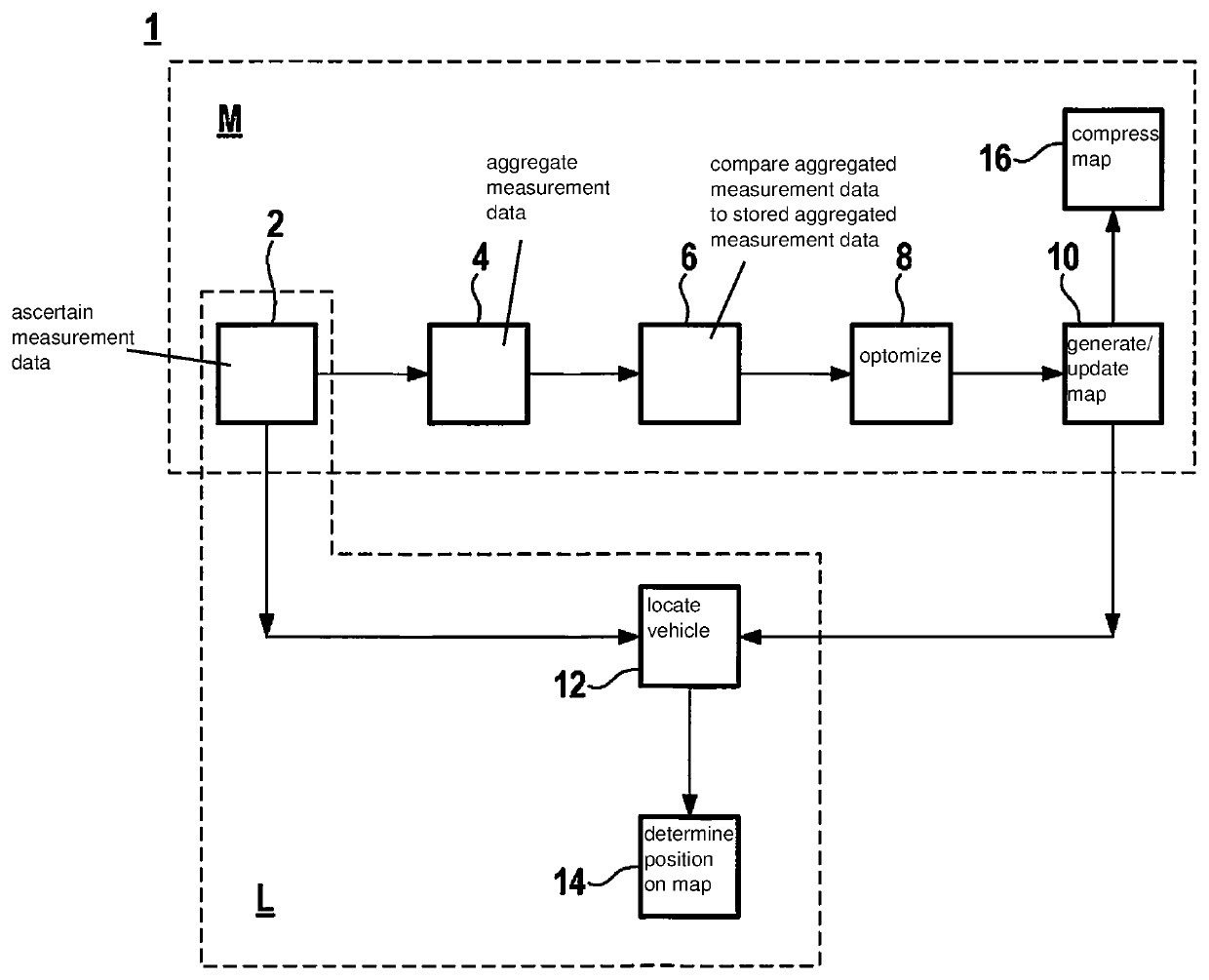Method and system for mapping and locating a vehicle based on radar measurements
- Summary
- Abstract
- Description
- Claims
- Application Information
AI Technical Summary
Benefits of technology
Problems solved by technology
Method used
Image
Examples
Embodiment Construction
[0033]In a first step 2 of the method 1 according to the present invention, measurement data of the surroundings of the at least one vehicle are ascertained by at least one radar sensor. The at least one radar sensor may be situated in or on the at least one vehicle. The at least one radar sensor may generate radar waves continuously or at defined time intervals and receive radar waves reflected by objects and the vehicle's surroundings based on a time-of-flight analysis. For this purpose, the radar sensor has an electronic controller and an evaluation unit for controlling the generation of radar waves and for evaluating reflected radar waves. The reflected radar waves received by the radar sensor are ascertained in the form of measurement data or measurement points and are stored at least temporarily.
[0034]In a further step, the measurement data are aggregated 4. This serves in particular to reduce a measurement data density of the ascertained measurement data and to reduce a stora...
PUM
 Login to View More
Login to View More Abstract
Description
Claims
Application Information
 Login to View More
Login to View More - R&D
- Intellectual Property
- Life Sciences
- Materials
- Tech Scout
- Unparalleled Data Quality
- Higher Quality Content
- 60% Fewer Hallucinations
Browse by: Latest US Patents, China's latest patents, Technical Efficacy Thesaurus, Application Domain, Technology Topic, Popular Technical Reports.
© 2025 PatSnap. All rights reserved.Legal|Privacy policy|Modern Slavery Act Transparency Statement|Sitemap|About US| Contact US: help@patsnap.com

